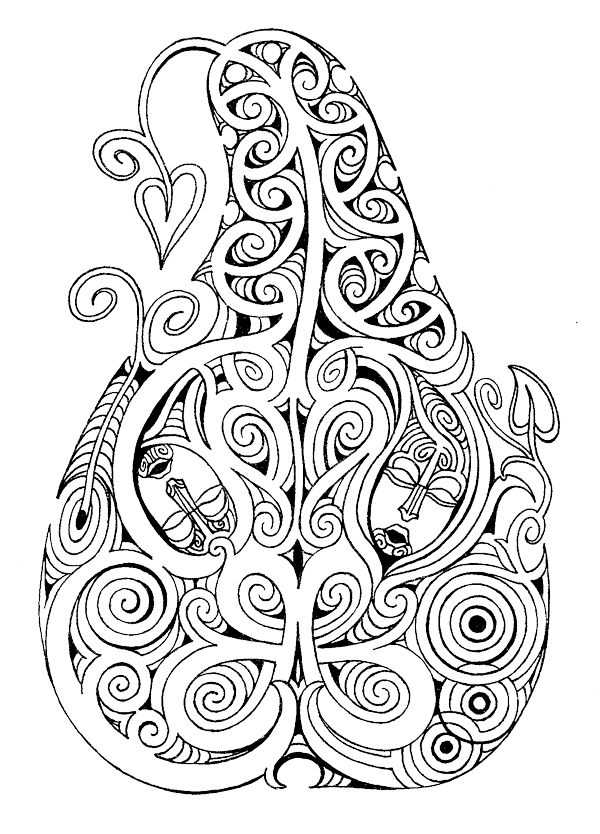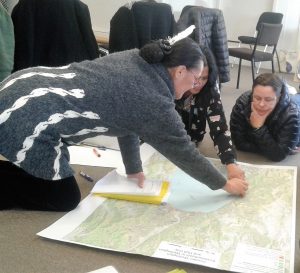
Hine-putehue - Kaitiaki of the gourd, restoring peace, calm, and healing with soothing tones and musical qualities.
Kia whakatōmuri te haere whakamua.
I walk backwards into the future with my eyes fixed on my past.
Deepening our historical knowledge of the places in which we live and honouring the indigenous people of the land is a vital part of a sustainability journey. Many mainstream schools and ECE centres approach this through exploring local stories, and using tikanga and te reo Māori as part of their learning programmes, however it can be challenging to do this in a culturally authentic way.
Cultural safety in relationships with Mana Whenua
The key to cultural safety for teachers lies in a relationship with Mana Whenua. Yet throughout Aotearoa, Mana Whenua representatives are in high demand.
“Mana Whenua just do not have the feet on the ground to fulfill the community needs across the region”, says Whaea Pekaira Rei. A wānanga model with many teachers engaging with iwi at once is therefore ideal for Mana Whenua. Enviroschools Te Upoko o te Ika a Māui, with the gracious support of Whaea Pekaira, have been able to bring some initial wānanga opportunities to fruition for teachers in Te Awa Kairangi and Te Whanganui a Tara.
Wānanga provide opportunity for groups of teachers to explore te ao Māori
In May and August 2018, 22 teachers from ece centres and schools in Te Awakairangi and Te Whanganui-a-Tara attended two wānanga with local mana whenua Te Āti Awa and Taranaki Whānui. A third is planned for 2019. Whaea Pekaira says that “these wānanga allowed many to unpack and unfold perceptions, perspectives, and cultural experiences with Te Ao Māori”.
“One of the major areas of support needed is Mana Whenua input of local stories, waiata, knowledge and history that can assist with building the centre pepeha safely” – Whaea Pekaira.
Unique opportunity to develop understandings of kawa and tikanga

Wānanga ki TeTatau o Te Pō Marae (2)
The first event was held at Te Tatau o te Pō Marae on the Hutt Road, and focused on kawa and tikanga. Teachers were welcomed with a traditional pōwhiri and then had the opportunity to discuss and explore the welcome processes used in their schools or centres.
Knowing the reasons behind the protocols helped teachers to understand what might be appropriate to include in a school pōwhiri or whakatau and what might in fact be more appropriate to remain in a marae situation.
Teachers acknowledged that they needed advice and guidance around incorporating Te Ao Māori into school pōwhiri process.
“It is not our place to pick and choose from Te Ao Māori. Getting it right requires hard work and collaboration”, said one teacher participant. After the wānanga many felt they wanted to change aspects of their practices, particularly to ensure cultural safety for children.
Acknowledging the significance of local history

Wānanga at Hikoikoi Reserve
Learning about how Taranaki iwi migrated to Te Whanganui a Tara and became Mana Whenua was new knowledge for many teachers. They also appreciated the opportunity to discuss the cultural, spiritual and economic costs of colonisation with mana whenua. The specific impacts locally also provided important new learning with the marae location itself, now surrounded by industry and roads, telling its own story.
“The key take home for me was the importance of history . . . and our collective responsibilities because of that” – Participating teacher.
The evening provided an opportunity for teachers to learn karakia and waiata to be able to take back and share at school. They took up the challenge of using a traditional Māori approach to learning – in the dark, through listening and repetition.
An enthusiasm for more
Teachers had a strong interest in the history of their localities and this led to a second wānanga for the same group of teachers in August 2018, held at the Wellington Tenths Trust at Hikoikoi reserve.
Pekaira shared the specific stories and environmental features of the places where our schools and centres are located and helped everyone identify the maunga (mountains) and awa (rivers) of Te Awakairangi and Te Whanganui-a-Tara in order to create school pepeha. Teachers loved how each person naturally develops a connection with the environment through sharing their identity in this way.
Additionally the group learned about the deeply sad and significant history of Parihaka. “I just can’t believe I wasn’t taught this at school or in teachers’ college. We all need to know this!”

Whaea Pekaira Rei helps teachers locate significant geographical features.
Teachers demonstrate commitment to continued learning
A commitment to continued learning and exploration is evident in participating teachers.
East Harbour Kindergarten have hosted Enviroschools nearby to share their learning from the wānanga and look at ways they can work together.
Koraunui School has adopted a karakia learned at the wānanga and teachers from Maungaraki School have run the wānanaga mapping exercise with their whole staff.
Berhampore School have initiated a role of tikanga champion in their school.
“We learned so much from the discussions about making connections and the need for consultation with Mana Whenua. We will revisit our centre mihi, and find ways for our tamariki to connect with our awa, maunga, moana and make the connection between these and the pepeha” – Participating teacher.

Whaea Pekeira closing off the wānanga.